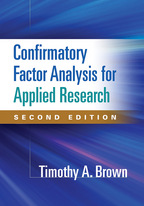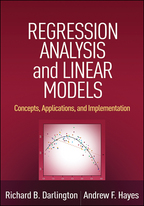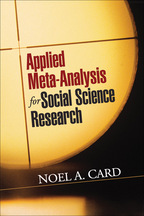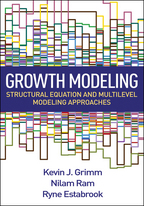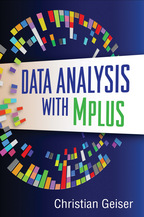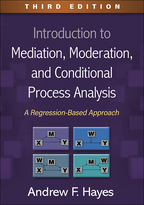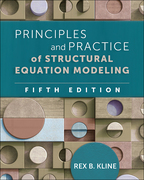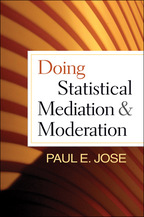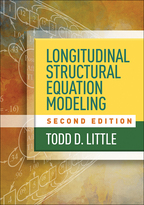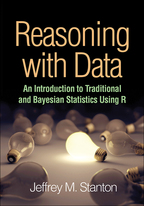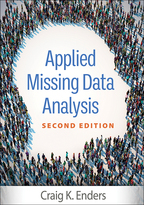Confirmatory Factor Analysis for Applied Research
Second Edition
Timothy A. Brown
HardcoverPaperbacke-bookprint + e-book
Hardcover
orderJanuary 7, 2015
ISBN 9781462517794
Price: $108.00 462 Pages
Size: 7" x 10"
Paperback
orderJanuary 8, 2015
ISBN 9781462515363
Price: $72.00462 Pages
Size: 7" x 10"
Read the Series Editor's Note by Todd D. Little
“Very helpful tables are used to summarize each step of a method or procedure….Chapter 3 is the heart of the textbook. It is a beautiful introduction to CFA….Summaries at the beginning and end of each chapter, an extensive number of substantive examples, figures and tables, appendices, software input and output files, as well as a sophisticated structure…make each chapter very easy to follow….Provides readers with clear recommendations and guidelines of how to deal with problems as well as a comprehensive overview of the most important aspects of CFA that an applied researcher should know. Given these outstanding qualities, I strongly believe that [this text] will continue to have a strong impact on applied researchers…and graduate students. The first edition has become a benchmark textbook in the field of introductory psychometrics, and the carefully revised second edition will widen its readership and make an impact very soon.”

—Journal of Educational and Behavioral Statistics
“Brown's writing is excellent; this book does a clearer and better job of explaining CFA concepts than any other I have read. It has had a very positive impact on the quality of applied CFA studies in the social and behavioral sciences. I will continue to use the second edition in my graduate measurement theory course; it enables my students to greatly improve the quality of their dissertation research. This is the best book I've seen for providing graduate students with the skills they need to develop and evaluate measures of psychological constructs.”

—G. Leonard Burns, PhD, Department of Psychology, Washington State University
“I am a big fan of this book. When something goes wrong in SEM, it is almost always due to a faulty measurement model, so students need to have a thorough understanding of latent trait measurement models before learning how to evaluate structural models. That is why this book is so important. My students regularly comment on how accessible the text is. I very much like the examples of study results, which students can use as templates for their own reports. The numerically worked examples throughout are extremely helpful at demystifying the process.”

—Lesa Hoffman, PhD, Institute for Lifespan Studies, University of Kansas
“This book occupies a unique and important position in the field. It describes the use of CFA to address a wide range of important social science research questions that are too often ignored or underdeveloped in books on structural equation modeling. The text helps readers understand the nuances of CFA in a way that is deep yet incredibly accessible. I highly recommend this book to students and experienced social scientists interested in applying this powerful approach in their research.”

—Noel A. Card, PhD, Department of Educational Psychology, University of Connecticut
“The most comprehensive reference text on CFA for experienced researchers. Other texts typically devote a chapter or two to the subject, but Brown’s coverage is wide and deep. Frankly, what gives this book value to me is that it is a reference text that can be used for instruction. Aided by clear examples, simplified tables, and helpful visual depictions, readers easily gain an understanding of how to run popular modeling software and correctly interpret the output. Perhaps one of the finest jewels in this book is the explanation of non-positive definite matrices, the bane of LISREL users. I also find the thread throughout the book on explaining equivalent models very important.”

—Randall MacIntosh, PhD, Professor of Sociology, California State University, Sacramento
“I highly recommend this book to colleagues and students who teach and apply structural equation modeling. The book provides an invaluable resource for applied researchers concerning concepts, procedures, and problems in CFA, as well as how to interpret and report analysis results. An especially valuable feature is the many detailed examples that are worked out in detail and presented along with syntax and output from leading software packages. The Appendices at the end of several chapters expand on many technical points the reader might fail to grasp otherwise.”

—James G. Anderson, PhD, Department of Sociology, Purdue University
“The book does an excellent job of walking through the steps in an analysis. It is wonderfully user friendly in the way it presents each step, discusses major decisions to be made, and presents code and output. Not only do I think this is the best book out there for learning CFA, but I also think it is a fantastic way to learn introductory structural equation modeling methods.”

—Scott J. Peters, PhD, Department of Educational Foundations, University of Wisconsin-Whitewater
“A strength of this book is the style of the author's presentation. Many important concepts are explained in plain language, rather than by mathematical formula. The book reads as though you were listening to a lecture. It provides the learner with an extensive understanding of the theory and applications of CFA. I also strongly recommend this book to practitioners who are in need of a comprehensive reference for better applications of CFA.”

—Akihito Kamata, PhD, Department of Education Policy and Leadership and Department of Psychology, Southern Methodist University
—Journal of Educational and Behavioral Statistics
“Brown's writing is excellent; this book does a clearer and better job of explaining CFA concepts than any other I have read. It has had a very positive impact on the quality of applied CFA studies in the social and behavioral sciences. I will continue to use the second edition in my graduate measurement theory course; it enables my students to greatly improve the quality of their dissertation research. This is the best book I've seen for providing graduate students with the skills they need to develop and evaluate measures of psychological constructs.”
—G. Leonard Burns, PhD, Department of Psychology, Washington State University
“I am a big fan of this book. When something goes wrong in SEM, it is almost always due to a faulty measurement model, so students need to have a thorough understanding of latent trait measurement models before learning how to evaluate structural models. That is why this book is so important. My students regularly comment on how accessible the text is. I very much like the examples of study results, which students can use as templates for their own reports. The numerically worked examples throughout are extremely helpful at demystifying the process.”
—Lesa Hoffman, PhD, Institute for Lifespan Studies, University of Kansas
“This book occupies a unique and important position in the field. It describes the use of CFA to address a wide range of important social science research questions that are too often ignored or underdeveloped in books on structural equation modeling. The text helps readers understand the nuances of CFA in a way that is deep yet incredibly accessible. I highly recommend this book to students and experienced social scientists interested in applying this powerful approach in their research.”
—Noel A. Card, PhD, Department of Educational Psychology, University of Connecticut
“The most comprehensive reference text on CFA for experienced researchers. Other texts typically devote a chapter or two to the subject, but Brown’s coverage is wide and deep. Frankly, what gives this book value to me is that it is a reference text that can be used for instruction. Aided by clear examples, simplified tables, and helpful visual depictions, readers easily gain an understanding of how to run popular modeling software and correctly interpret the output. Perhaps one of the finest jewels in this book is the explanation of non-positive definite matrices, the bane of LISREL users. I also find the thread throughout the book on explaining equivalent models very important.”
—Randall MacIntosh, PhD, Professor of Sociology, California State University, Sacramento
“I highly recommend this book to colleagues and students who teach and apply structural equation modeling. The book provides an invaluable resource for applied researchers concerning concepts, procedures, and problems in CFA, as well as how to interpret and report analysis results. An especially valuable feature is the many detailed examples that are worked out in detail and presented along with syntax and output from leading software packages. The Appendices at the end of several chapters expand on many technical points the reader might fail to grasp otherwise.”
—James G. Anderson, PhD, Department of Sociology, Purdue University
“The book does an excellent job of walking through the steps in an analysis. It is wonderfully user friendly in the way it presents each step, discusses major decisions to be made, and presents code and output. Not only do I think this is the best book out there for learning CFA, but I also think it is a fantastic way to learn introductory structural equation modeling methods.”
—Scott J. Peters, PhD, Department of Educational Foundations, University of Wisconsin-Whitewater
“A strength of this book is the style of the author's presentation. Many important concepts are explained in plain language, rather than by mathematical formula. The book reads as though you were listening to a lecture. It provides the learner with an extensive understanding of the theory and applications of CFA. I also strongly recommend this book to practitioners who are in need of a comprehensive reference for better applications of CFA.”
—Akihito Kamata, PhD, Department of Education Policy and Leadership and Department of Psychology, Southern Methodist University

